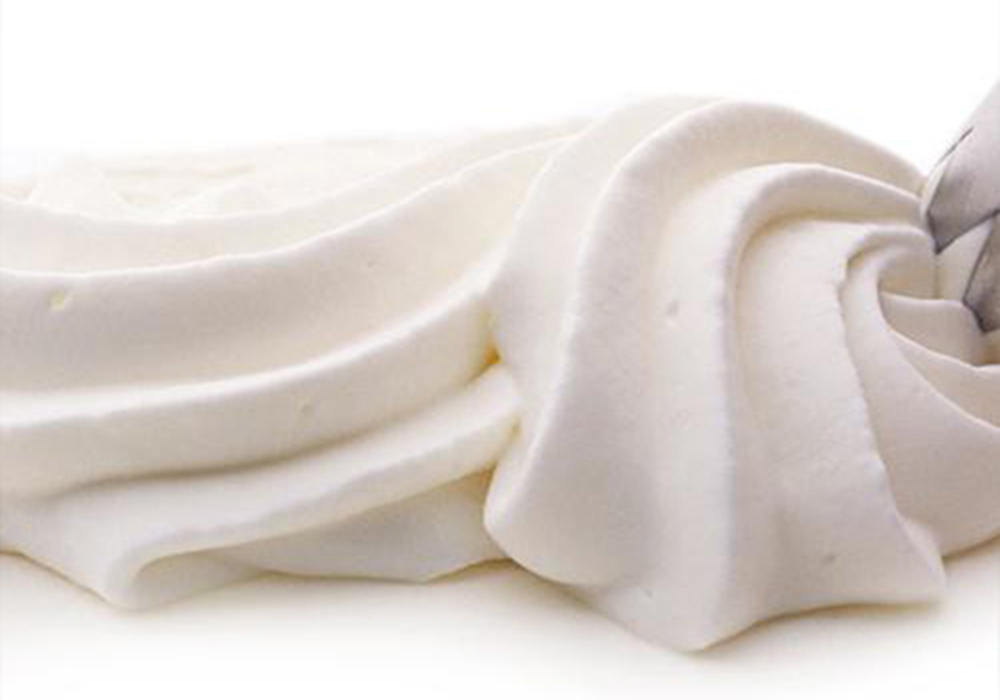Cream for sale to consumers is produced with different fat contents. Cream of lower fat content, 10 – 18%, is often referred to as coffee cream; it is increasingly used for desserts and in cooking. Cream with a higher fat content, typically 35 – 40 %, is usually considerably thicker. It can be whipped into a thick froth and is therefore referred to as “whipping cream”.
Cream for sale to consumers is produced with different fat contents. Cream of lower fat content, 10 – 18%, is often referred to as coffee cream; it is increasingly used for desserts and in cooking. Cream with a higher fat content, typically 35 – 40 %, is usually considerably thicker. It can be whipped into a thick froth and is therefore referred to as “whipping cream”.
Figure shows a process line for low fat cream. Untreated milk from the storage tanks is heated regeneratively in the heat exchanger to separation temperature, 62 – 64C. The milk then flows to the separator for separation to skimmilk and cream with the required fat content, usually 35 – 40%. The low fat cream is mixed with skimmilk to obtain the required fat content. The cream is homogenised.
The mixing of cream and skimmilk is done with a metering pump which injects the skimmilk into the cream line. The cream temperature is then adjusted to homogenising temperature. After homogenisation the cream is returned to the heat exchanger, where it is pasteurised at 85 – 90C for 15 – 20 seconds before being cooled to about 5C and packed. Cream with a low fat content has a relatively low viscosity and is not of the consistency normally wanted by customers. It is necessary to select the correct temperature and pressure for homogenisation to give the cream the correct viscosity. The viscosity of cream increases with increasing homogenising pressure and is reduced by a temperature increase. The cream viscosity can be obtained by keeping the homogenising temperature constant at about 57C and homogenising pressure at 200 bar.
Advantages
* Opportunity to realize products with customized recipes.
* Opportunity to produce more than one product with the same processing line.
* High quality of the final product keeping an elevated nutritional value.
* Wide customization of the final product.
* Maximum yield, minimum production waste.
* Highest energy savings thanks to the most advanced technologies.
* Complete line supervision system through monitoring of every process phase.
* Recording, visualization and printing of all daily production data.
|
Working capacity |
from 1 tons/d up to 50 tons/d |
|
Products |
- Coffee cream |
Equipments
* Plate pasteurizer
* Deodorizer
* Centrifuge separator
* Homogenizer
* Tanks
* Storage tank
* Processing tank
Aging tank
Aseptic tank system
* Aseptic bag filler





